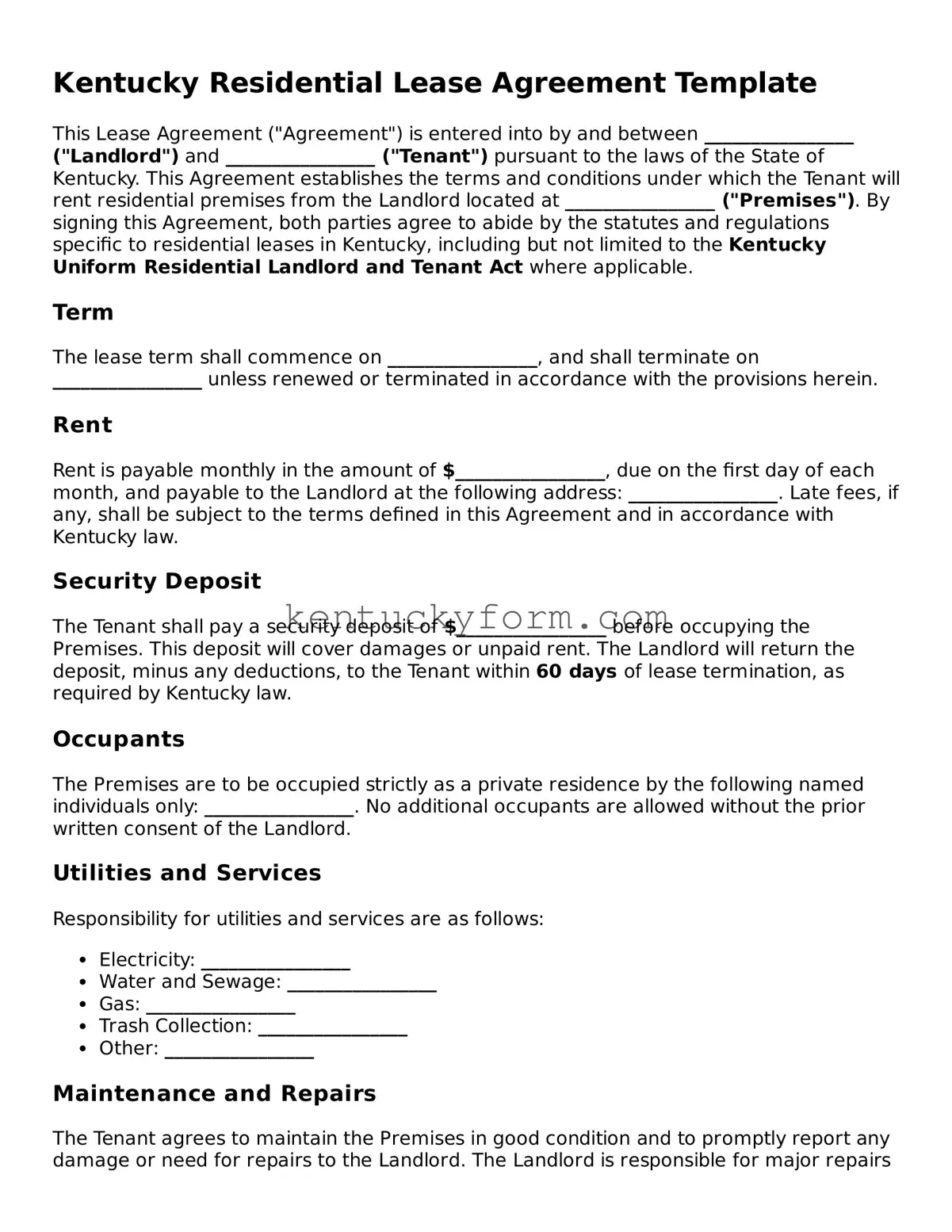A Residential Lease Agreement, a pivotal document for renters and landlords in Kentucky, forms a foundation similar to various other legal agreements, each with its distinct context yet sharing core similarities in structure and purpose. Understanding these parallels offers insights into the broader landscape of legal agreements that govern various other interactions and exchanges.
One document similar to the Kentucky Residential Lease Agreement is the Commercial Lease Agreement. Though it pertains to business properties rather than residential units, its core function mirrors that of a residential lease in defining the terms, duration, and conditions under which property is rented. Both documents establish a legal framework for the lease term, payment schedules, and responsibilities of each party, ensuring a clear understanding of obligations and rights.
Another close relative is a Sublease Agreement. This document comes into play when an existing tenant wants to rent out the leased premises to a third party. Like the primary lease agreement, it delineates the terms under which the sublessee will use the property, including rent, utilities, and duration, safeguarding the original lessee's interests according to their initial lease terms.
The Rent-to-Own Agreement stands out as well, blending elements of leases with terms for purchasing the rented property. It extends beyond the simple leasing framework to include conditions under which the tenant can buy the property. Similar to a lease agreement, it details payments, but with an added focus on conditions precedent for the eventual sale of the property.
Equally integral to understanding these dynamics is the Roommate Agreement, a document that outlines the sharing of a residential space among individuals not necessarily part of the main lease agreement. It shares similarities with a lease in specifying terms for rent shares, utility payments, and house rules, fostering a harmonious living environment.
The Property Management Agreement is another document with parallels to residential leases, especially from a landlord's perspective. It grants a property manager the authority to administer a rental property, detailing their responsibilities, compensation, and the extent of their power. While distinct, both documents serve to protect the property owner's interests and ensure the smooth operation of rental agreements.
The Vacation Rental Agreement, specific to short-term rentals, still echoes the structure of traditional leases by specifying terms for the temporary stay, payment, and responsibilities of both the guest and the property owner. Although its duration is typically shorter, the essence of defining mutual expectations remains consistent.
The Vehicle Lease Agreement, while distinct in its focus on personal property rather than real estate, bears resemblance in its purpose to outline terms under which a vehicle is leased, including payments, usage limits, and duration. This agreement maps the pathway for a clear mutual understanding between lessor and lessee, akin to what is observed in residential leasing.
A Lease Amendment is a document that becomes relevant when terms of the original lease agreement need adjustments. Whether for a residential or commercial property, this document follows the structure of specifying agreed-upon changes, ensuring that both parties are clear about modifications to the lease terms, thus maintaining its enforceability and relevance.
Lastly, the Early Termination of Lease Agreement reflects similarities in its reliance on the initial lease agreement to determine conditions under which a lease may be prematurely concluded. While it acts as a corollary to the lease, detailing the penalties, conditions, and processes for early termination, it upholds the principle of mutual agreement and understanding inherent in the lease dynamic.
Through the lens of these documents, one can appreciate the foundational role the Residential Lease Agreement plays in a wide array of contractual relationships. Each agreement, in its own capacity, aims to delineate rights, responsibilities, and terms, ensuring clarity and legal enforceability for all parties involved.
